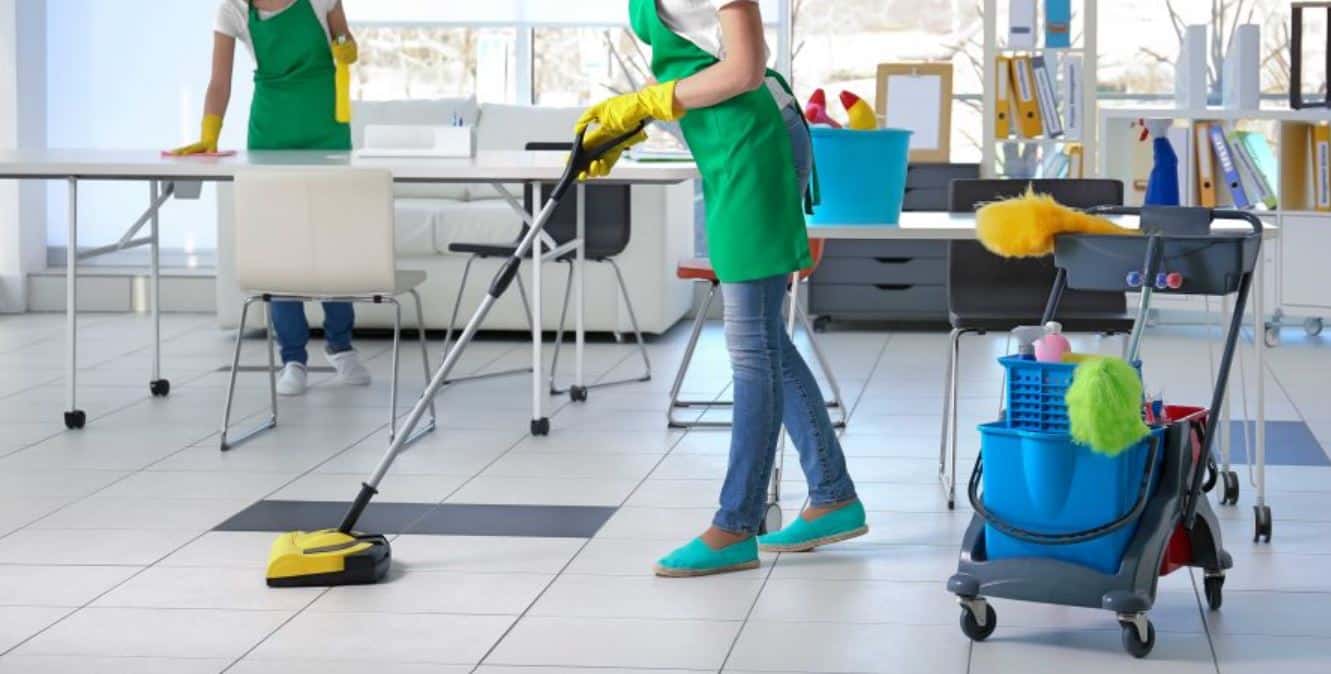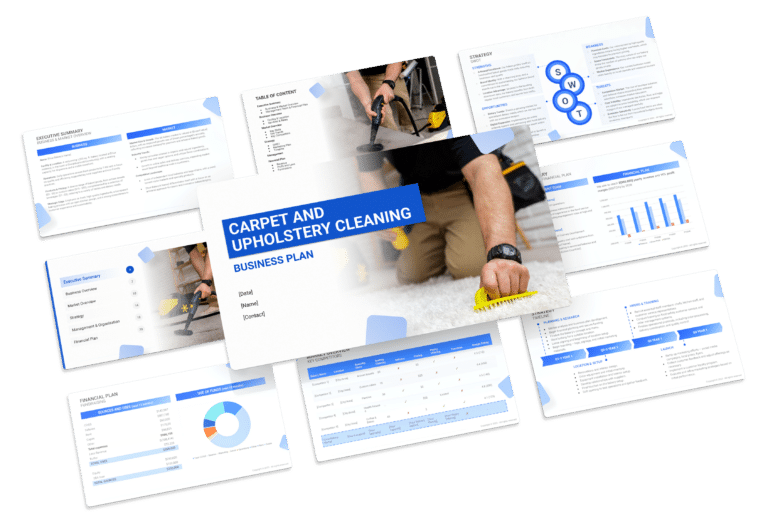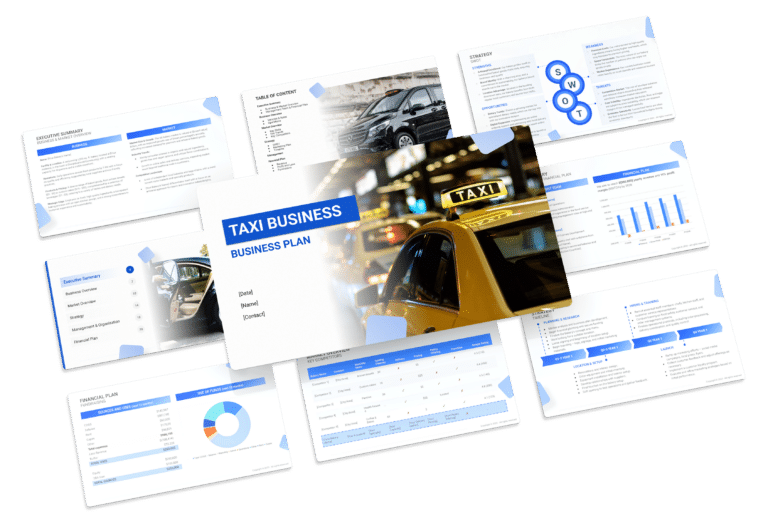How to Prepare a SWOT for a Commercial Cleaning Business

Essential in formulating a business strategy for a commercial cleaning business is the integration of a SWOT analysis. SWOT (Strengths, Weaknesses, Opportunities, and Threats) provides a comprehensive framework for owners to evaluate their enterprise. While strengths and weaknesses are internal factors under the business’s control, opportunities and threats are external elements impacting operations.
Within a business plan, a SWOT analysis illuminates the commercial cleaning business’s market position, revealing growth potential and areas for enhancement. Strengths may include a skilled workforce, specialized cleaning services, and advanced equipment. Weaknesses might involve seasonality or dependency on specific clients.
This article aims to explore various examples of strengths and weaknesses, guiding commercial cleaning business owners in effectively incorporating them into their business plans.

Strengths
Commercial cleaning services form the backbone of a healthy and productive work environment. Understanding the strengths inherent in this sector is crucial for strategic positioning.
- Essential Service for Business Operations: Commercial cleaning is an essential service for maintaining a hygienic workspace, contributing to the overall well-being of employees and clients.
- Example: Offering specialized COVID-19 disinfection services showcases adaptability and meets the heightened demand for virus prevention measures.
- Experienced and Trained Workforce: The industry relies on a skilled and trained workforce, ensuring professional cleaning standards.
- Example: Emphasizing ongoing training programs for staff in the latest cleaning techniques and technologies demonstrates a commitment to excellence.
- Flexible Service Packages: Commercial cleaning companies often offer flexible service packages tailored to the diverse needs of businesses.
- Example: Introducing customizable cleaning schedules and services allows clients to select options that align with their specific requirements and budget constraints.
- Consistent Demand Across Industries: The demand for commercial cleaning services transcends various industries, providing a consistent stream of projects.
- Example: Specializing in niche cleaning services for specific industries, such as medical facilities or manufacturing plants, can establish a unique market position.
Weaknesses
Acknowledging weaknesses allows commercial cleaning businesses to address challenges proactively, ensuring service quality and client satisfaction.
- Dependence on Economic Conditions: The industry may be susceptible to economic downturns, as businesses may cut discretionary spending on non-essential services.
- Example: Implementing cost-effective cleaning solutions and offering discounted packages during economic downturns helps retain clients and attract new business.
- Highly Competitive Market: The commercial cleaning sector is highly competitive, with numerous local and national players vying for contracts.
- Example: Implementing a referral program that rewards existing clients for recommending the services to other businesses can enhance the client acquisition strategy.
- Staffing Challenges and Turnover: Staffing challenges, including high turnover rates, can impact service consistency and client relationships.
- Example: Instituting employee recognition programs and investing in staff development initiatives foster a positive work environment, reducing turnover.
- Environmental Impact Concerns: Increased awareness of environmental impact may pose challenges for companies using harsh cleaning chemicals.
- Example: Transitioning to eco-friendly cleaning solutions and promoting sustainable practices can address environmental concerns and attract eco-conscious clients.
Opportunities
Identifying and capitalizing on opportunities is vital for commercial cleaning businesses seeking growth and market expansion.
- Rising Focus on Hygiene and Sanitization: The heightened focus on hygiene, especially post-pandemic, opens opportunities for providing specialized sanitization services.
- Example: Marketing advanced sanitization techniques and technologies, such as electrostatic disinfection, caters to clients seeking top-tier cleanliness.
- Technological Integration for Efficiency: Integrating technology, such as smart sensors and automated cleaning systems, enhances service efficiency.
- Example: Offering smart building cleaning solutions with real-time monitoring capabilities improves service effectiveness and positions the business as a tech-forward provider.
- Expansion into Specialized Cleaning Services: Diversifying services to include specialized cleaning for industries like healthcare or data centers creates new revenue streams.
- Example: Training staff in the specific cleaning requirements of sensitive environments and marketing the business as an expert in specialized cleaning services broaden the client base.
- Long-Term Contracts and Partnerships: Pursuing long-term contracts with businesses and forming partnerships with property management companies establishes stable revenue streams.
- Example: Introducing discounted rates for extended service contracts encourages clients to commit to long-term arrangements, ensuring consistent business.
Threats
Anticipating and mitigating threats is essential for commercial cleaning businesses to ensure resilience and sustained success.
- Regulatory Changes and Compliance: Evolving regulations related to cleaning standards and workplace safety may pose challenges.
- Example: Regularly updating staff on compliance requirements, obtaining relevant certifications, and adapting cleaning practices to meet new standards showcase commitment to regulatory adherence.
- Budget Constraints for Clients: Economic uncertainties may result in businesses cutting back on cleaning budgets, impacting the demand for services.
- Example: Introducing cost-effective cleaning packages and demonstrating the cost-saving benefits of routine maintenance mitigate concerns related to budget constraints.
- Emerging Technologies Disruption: The rapid emergence of disruptive technologies may alter client expectations and industry standards.
- Example: Investing in training programs that keep staff updated on the latest cleaning technologies and incorporating innovative solutions, such as robotic cleaners, showcases adaptability.
- Online Reputation Management Challenges: Negative online reviews can influence potential clients, emphasizing the importance of proactive reputation management.
- Example: Implementing a robust customer feedback system, addressing negative reviews promptly, and showcasing positive testimonials in marketing materials build and maintain a positive online reputation.





